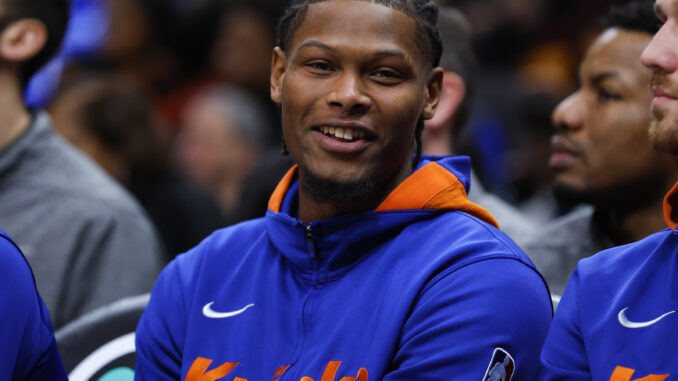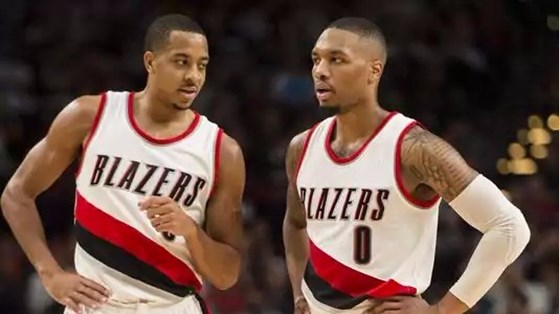
In a vacuum, the Portland Trail Blazers made a flurry of deals that made the team a bit better before the NBA’s trade deadline on Feb. 9.
Look outside that vacuum, though, and it quickly becomes apparent that Blazers still have a long way to go before they could compete for an NBA title or even be considered an upper-tier team in the Western Conference.
When you’re lost in the woods, we have all been taught as children the best thing to do is stay in one place and hug a tree.
This is a great way to get out of the woods when you are lost while hiking and have no idea which way to go.
It is not, however, a great strategy if you are an NBA team with no clear direction. Yet, it is a strategy the Blazers seem determined to follow.
In a trio of trades, the team brought in forward Cam Reddish and a first-round pick from the New York Knicks, along with a pair of filler players, in exchange for Josh Hart. Then they acquired guard Matisse Thybulle from the Philadelphia 76ers in exchange for a second-round pick and the filler they just obtained from New York. Finally, they brought in forward Kevin Knox and five(!) second-round picks from the Golden State Warriors in exchange for Gary Payton II.
If none of those look like earth-shattering moves to you, you are not wrong.
I’ll go ahead and sum up the scouting report on the new players, which easily can apply to all of them:
“(Insert Player Name) was not getting much playing time on (Insert Old Team). However, he has shown flashes in his career and can contribute on defense. He will compete with (insert name of other acquired players) for minutes in Portland’s rotation.”
The trades could all be graded together as a perfectly acceptable C+.
In addition to the players, the Blazers did get a first-round pick from the Knicks, which will convey this season if the Knicks, currently in seventh in the Easter Conference, make the playoffs. They also got a pile of second-round picks, the NBA equivalent of spare change you found under couch cushions. The Knicks’ pick could be a fairly important future asset, as the Blazers owe a protected first-round pick to the Bulls. Allowing their own pick to convey would free up future first-round draft picks to be traded since teams cannot trade first-round picks for consecutive years.
Being able to move first-rounders is the lifeblood of any NBA team looking to make a splashy deal. And making splashy deals is just what some of Portland’s Western Conference competitors did. The Mavericks picked up Kyrie Irving from the Nets, the Lakers seemingly swapped out much of their roster overnight, and the Suns shipped out four future first-rounders as part of a package to bring in Kevin Durant.
While the Blazers made baby steps forward to help fix their porous defense and get something in return for Payton and Hart, who is a free agent at the end of the season, their competitors either made a move to shore up their spot at the top of the conference or to take giant leapfrog strides over the Blazers in the conference standings.
Looking at the roster before the trading deadline, the Blazers were about a .500 team, which could either finish just above the play-in round line or fail to make the playoffs entirely.
Looking at the roster after the trading deadline, the Blazers are…about a .500 team, which could either finish just above the play-in round line or fail to make the playoffs entirely.
Maybe the Blazers did call the Nets during the team’s 72-hour Fire Sale; perhaps they did kick the doors on other options to bring in an S-tier running mate for Lillard. But at the end of the day, they didn’t get one. This is a team stuck in a continuous mini-rebuild that either doesn’t want to acquire or doesn’t have the necessary firepower to acquire the talent around Lillard to push the team back to the top of the Western Conference. No new trails are being blazed, no top 5 picks are being made, and no playoff series are being won.
Certainly, Joe Cronin needs to be afforded some leeway in rebuilding the roster that he was handcuffed to from former General Manager Neil Olshey, but this is a team on a ticking clock that doesn’t have time to be stuck in a min-rebuild every season. With Lillard turning 33 this summer and 36 in the final year of his contract, the Blazer realistically have a window of three seasons to put everything together if they want Lillard to be the one to lead them to the promised land while his body can still hold up and he can still perform at a high level. For professional athletes, every year after age 30 becomes a ticking time bomb. No matter how well they take care of their bodies, the wrath of time is inevitable.
There are only so many more times the Blazers can go through a transaction window and nibble around the roster edges to make minor improvements before they miss their window entirely.
If they do that many more times, they will continue to end up right where they are now, a perpetually .500 team, stuck hugging a tree in the forest while others blaze trails around them.




